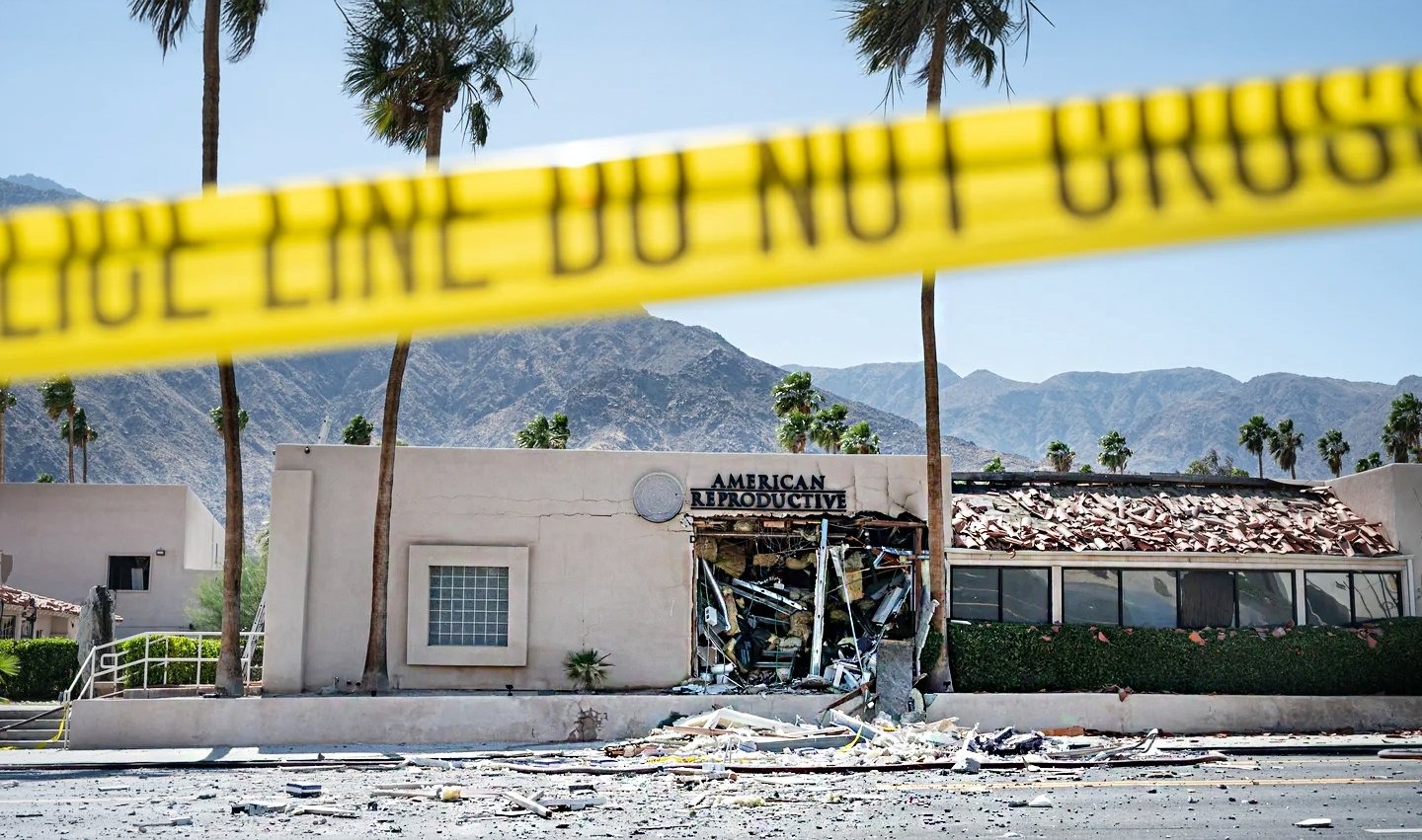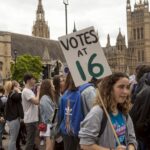Introduction
On May 17, 2025, a devastating explosion rocked the American Reproductive Centers (ARC) fertility clinic in Palm Springs, California. The blast, which occurred in broad daylight, left one person dead and four others injured. As the dust settled and emergency services rushed to the scene, investigators quickly determined that this was no accident. The FBI soon classified the explosion as a deliberate act of terrorism, sparking a nationwide conversation on domestic extremism, safety at healthcare facilities, and the growing threats to reproductive health centers in the United States.
This article offers an in-depth, journalistic look at the incident, its implications, and the ongoing investigation.
The Incident
The Explosion
At around 10:52 a.m. Pacific Daylight Time, a car exploded in the parking area behind the ARC fertility clinic on North Indian Canyon Drive. The explosion sent shockwaves through the quiet desert city, shaking nearby buildings and causing glass to shatter in businesses and homes several blocks away. The vehicle was parked close to the clinic’s consultation wing, which sustained the most visible structural damage.
Eyewitnesses described the blast as a “deafening boom,” followed by thick smoke and flames. Sirens echoed throughout the area as first responders rushed in to secure the scene, evacuate nearby facilities, and treat the wounded.
Casualties and Structural Damage
The explosion resulted in the death of one person—believed to be the attacker—and left four others injured. Emergency crews treated victims on-site before transporting them to local hospitals. Fortunately, no patients were present in the immediate consultation area at the time of the blast, and the facility’s sensitive IVF lab, which houses embryos and reproductive material, was reportedly unharmed.
The surrounding neighborhood experienced property damage, with shattered windows, scattered debris, and burned vehicles creating a scene of chaos. Police quickly cordoned off the area, initiating a multi-agency investigation.
Investigation and Findings
FBI and Federal Involvement
Given the nature and location of the explosion, federal agencies including the FBI and the Bureau of Alcohol, Tobacco, Firearms and Explosives (ATF) were brought in almost immediately. Their early assessment concluded that the explosion was caused by a car bomb, pointing toward premeditated violence.
The FBI has since designated the attack as an act of domestic terrorism. While the classification has stirred public discourse, it underscores the seriousness of the event and signals the federal government’s intent to pursue the case with maximum intensity.
Identity of the Attacker
Authorities later identified the deceased individual as 25-year-old Guy Edward Bartkus, a resident of Twentynine Palms, California. Law enforcement sources confirmed that Bartkus acted alone and had left behind a trail of digital evidence, including a video manifesto and a 30-minute audio recording in which he detailed his motives.
In his messages, Bartkus described himself as a “pro-mortalist,” a term associated with an extreme philosophical belief that existence is inherently harmful. He reportedly believed that reproduction contributed to unnecessary suffering, and he viewed fertility clinics as enablers of this existential burden. Investigators also discovered evidence that Bartkus had studied previous acts of violence and appeared to be inspired by a twisted ideological framework.
Chilling Pre-Attack Footage
Among the items recovered at the blast site was a camera mounted on a tripod, suggesting that Bartkus intended to document or live-stream the explosion. Authorities are analyzing the device’s contents, raising concerns about the use of digital media in modern extremist attacks.
This discovery adds a disturbing dimension to the case, indicating not just a desire to cause harm, but also to broadcast terror for ideological or psychological impact.
Community and Official Responses
Local Reaction and Shock
Palm Springs, typically known for its resort-like serenity and progressive values, was left shaken. The city has rarely experienced violent crime on this scale, let alone a terrorist attack. Residents expressed horror that such a calculated act could take place in their community.
The staff of the fertility clinic were emotionally devastated. Many had built long-term relationships with patients undergoing emotionally and physically taxing treatments. Dr. Maher Abdallah, the operator of the facility, made a public statement reassuring clients that the reproductive lab was secure and that no stored embryos were affected. He emphasized the clinic’s determination to resume operations and continue supporting patients despite the trauma.
Political and Government Statements
California Governor Gavin Newsom condemned the attack as “cowardly and inhumane,” pledging state resources to assist federal investigators and ensure safety at reproductive health facilities. Attorney General Pam Bondi called the explosion “an unforgivable act of domestic terrorism,” stressing that violence against women’s healthcare will not be tolerated.
Public officials across party lines echoed these sentiments, with many pointing to the broader implications of targeting healthcare providers.
Historical and Social Context
A Pattern of Attacks on Reproductive Centers
While shocking, the Palm Springs incident is not entirely unprecedented. Over the years, several reproductive health centers across the U.S. have been targeted by arson, vandalism, and even gun violence—usually linked to extremist views on abortion or reproduction.
In 2022, a former U.S. Marine was sentenced to nine years in prison for firebombing a Planned Parenthood clinic in Costa Mesa. He and his co-conspirators had planned further attacks, including on other medical facilities and public events. That case highlighted how organized and ideologically motivated some domestic extremists can be.
The Palm Springs bombing appears to fall into this disturbing trend, albeit from a different ideological origin. Instead of being rooted in religious or anti-abortion extremism, the suspect here was driven by philosophical nihilism—a rare but dangerous belief system that is now drawing increased scrutiny from law enforcement and counterterrorism experts.
The Rising Threat of Domestic Terrorism
The FBI has repeatedly warned of the rising danger posed by domestic extremists—individuals or groups radicalized online or through fringe ideologies. These actors often operate independently, making them harder to track and predict.
Unlike international terrorism, which often involves foreign funding or coordination, domestic terrorism tends to originate from isolated but radicalized individuals within the country. The Palm Springs explosion exemplifies this: a lone perpetrator, no apparent co-conspirators, and an ideology shaped largely through internet exposure and personal grievances.
Analysis: What This Means for Public Safety
Heightened Security for Medical Facilities
In response to the attack, fertility clinics and healthcare facilities across California and the broader United States have begun reassessing their security protocols. Many are adding surveillance systems, strengthening perimeters, and conducting staff training for emergency preparedness.
While such measures are often costly and disruptive, clinic administrators argue that they are necessary in today’s increasingly volatile environment. Providers must balance the need for security with their core mission of offering compassionate, accessible care.
Addressing the Digital Radicalization Pipeline
The case of Guy Edward Bartkus raises pressing questions about the role of online platforms in radicalizing vulnerable individuals. His manifesto and online activity suggest that he may have been influenced by obscure forums and digital communities promoting extremist philosophies.
Experts argue that tech companies must do more to monitor and flag harmful content, particularly when it encourages violence or promotes ideologies that devalue human life. Law enforcement also faces the challenge of identifying potential threats without infringing on free speech or privacy rights.
Conclusion
The bombing of the Palm Springs fertility clinic is a chilling reminder of the evolving nature of domestic terrorism in the United States. What began as a quiet Friday morning ended in tragedy, leaving a community reeling and a nation grappling with new questions about safety, extremism, and the sanctity of healthcare spaces.
As investigators piece together the final moments of the attacker and assess the broader implications of his actions, one thing is clear: this was not an isolated incident born of personal grievance. It was a targeted, ideologically motivated act designed to instill fear and disrupt lives.
In the face of such violence, the resilience of the Palm Springs community stands out. From healthcare workers to law enforcement officers, people have come together to heal, rebuild, and push back against hate. And while justice for the victims is still unfolding, the determination to protect life—and the places where life begins—has only grown stronger.





